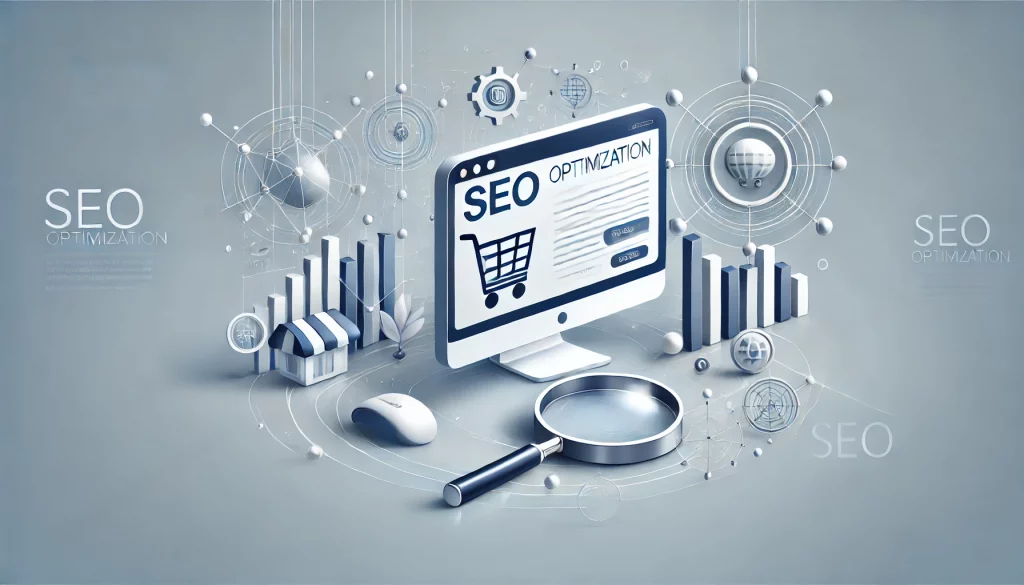
Is your dream to attract a steady flow of customers to your e-commerce store without excessive advertising costs? That’s exactly what SEO, or search engine optimization, is for. It helps your site rank higher in Google and other search engines. In this article, we’ll share how to make your site noticeable and appealing to search engines and users.
What is SEO and Why is It Important?
SEO (Search Engine Optimization) is a set of tools and strategies designed to improve a website’s ranking in search engine results. The higher your site ranks, the more users will see it, which leads to more purchases. Statistics show that 75% of users never make it to the second page of search results, making it critical to be “at the top.”
1. Keyword Research
Keywords are the foundation of SEO. These are the terms your potential customers type into search engines.
- How to find keywords? Use tools like Google Keyword Planner, Ahrefs, or Serpstat. Choose queries with high search volume and medium competition.
- Where to use keywords? Include them in titles, product descriptions, URLs, meta tags, and on-page text.
Tip: Avoid overstuffing! Excessive use of keywords can lead to penalties from search engines.
2. Optimize Your Site’s Structure
Search engines favor well-structured sites. Here are some tips:
- Clear navigation: Main categories should be visible and logically organized.
- Short URLs: For example,
www.site.com/category/productinstead ofwww.site.com/123xyz?product_id=456. - Mobile-friendly design: Most users shop on their smartphones, so your site must display correctly on mobile devices.
3. Quality Content is King
The main goal of search engines is to provide users with useful information. Therefore, your content should be:
- Unique: Avoid copying text from other sites.
- Informative: Provide detailed descriptions and answer potential customer questions.
- Engaging: Add blogs with tips, reviews, and recommendations.
Example: If you sell sports shoes, create an article titled: “How to Choose Running Shoes: 5 Useful Tips”.
4. Improve Site Loading Speed
If your site takes more than 3 seconds to load, you may lose up to 50% of potential customers. Improving speed helps retain visitors and boosts SEO.
- Optimize images by using WebP format and file compression.
- Minimize HTML, CSS, and JavaScript.
- Choose a fast hosting provider.
Use Google PageSpeed Insights to check your site’s speed.
5. Meta Tags and Descriptions
Meta tags (title and description) are what users see in search results. Create concise yet attractive descriptions that match the page’s content.
Example title: “Buy Nike Running Shoes – Free Shipping in Ukraine”.
Description: “Wide selection of Nike running shoes for men and women. Discounts up to 20%! Fast delivery within 1-2 days”.
6. Internal and External Links
- Internal links: Link pages within your site to improve navigation.
- External links: Refer to authoritative sources carefully.
- Backlinks: Get links from other sites to increase your site’s authority.
7. Local SEO for Regional Stores
If you have a physical store, add it to Google My Business. Include your address, hours of operation, and customer reviews. This will help attract local customers.
8. Analytics and Continuous Improvement
Use analytics tools like Google Analytics and Google Search Console to track your SEO strategy’s effectiveness. Identify which pages drive the most traffic and optimize the ones that need improvement.
SEO is not an instant process but a long-term strategy. Investing time and resources in improving your site results in not only higher search rankings but also greater customer trust. Follow these tips, and your e-commerce store will become more visible to your customers.
Good luck with promoting your business!

Leave a Reply